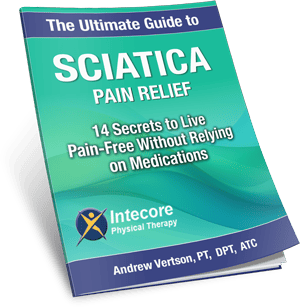“I have to get surgery for my torn meniscus. I’m going to be out of commission for a while.”
“My back problems have gotten so bad that my doctor says I need surgery to repair the herniated disk.”
“The MRI doesn’t look so good. Hopefully the surgery will be a quick fix.”
Do any of these Sound familiar?
Most of us know someone who has been told that they needed surgery for a knee or back issue – or we have received that disheartening news ourselves.
A herniated disk is one of the most common back problems in adults, and is often treated with lumbar discectomy as the first option. The goal of this surgery is to remove the herniated portion of the disc from the patient’s back, releasing pressure on surrounding nerves and muscles.
The other common injury that frequently leads to surgery is a meniscus tear. Your meniscus stabilizes and cushions the knee joint. A tear would be viewed easily on an MRI, in response to which many doctors would immediately prescribe surgery. Following the surgery, you would probably spend about two weeks with your leg completely immobilized. Then you would be introduced to a rehabilitation plan that included physical therapy – not to recover from your injured knee, but to recover from the surgery that supposedly fixed it.
Surgery, in the right circumstances, can be extremely beneficial. But unfortunately, it is over-prescribed and often unnecessary, especially for individuals with back and knee pain. Seeing a herniated disc or torn meniscus on the MRI screen may trigger an automatic prescription of surgery and medication- but these “quick fixes” may not be your safest or most helpful options. In fact, recent studies report trying physical therapy first can lead to better overall outcomes and reduce risk.
MRIs are a useful tool, but their readings should always be taken with a grain of salt. In fact, MRIs can produce false positives and lead to invasive surgeries for specific injuries that didn’t even exist in the first place. When given the opportunity, your body will do its best to heal itself.
This is where physical therapy comes in! In place of surgery you should consider working with a physical therapist to address your specific injury or pain, someone who genuinely wants to help you recover in a natural and low-risk manner.
Most knee, back, and other injuries occur because the surrounding muscles are too weak to support those joints and systems properly. You may think that your regular exercise and stretching is enough, but often working specific muscle groups leaves others underdeveloped and leaves your body unbalanced as a whole.
Do you want to learn more about why surgery shouldn’t be your first – let alone only – option for recovery? Click here to schedule your FREE Discovery Visit to see how we can help give your life back to you.
- Why Are My Feet Swollen? Common Causes Explained - June 2, 2025
- What Is Restless Leg Syndrome? Symptoms, Causes, and Relief Options - May 5, 2025
- Finding Your Balance: Inside and Out - April 22, 2025














